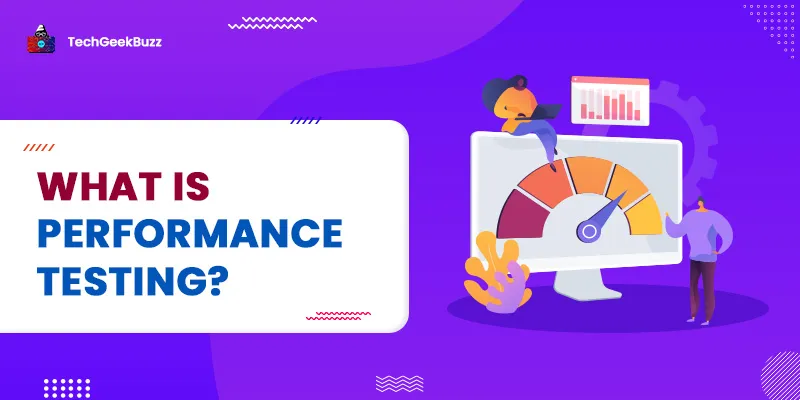Software of every functionality is ubiquitous, and this vast availability of the same has made it strenuous for new software products to find stable ground in the market. So, how can a software developer ensure that their product wins against the competitors? How can developers ensure the proper functionality of software?
Running a few testing rounds with quality assurance tools that test software for various verticals and functionality issues can answer both of these questions. Quality assurance tools provide automation to the process of software testing and accelerate results, improve feedback, maintain reputation, detect defects and save software from after-launch anomalies.
What are QA Tools?
QA tools for software testing ensure an optimum amount of essential tests are run on web applications, mobile applications, and functional software. These support planning, requirements, test creations, data gathering, and also insights into the software's functionality. T
here are immense tools available out there to help you test your software's quality assurance, speed, and optimization ratio. These tools assist teams in coming up with efficient software.
So, which QA tool to choose? Following is a list of the 10 best QA tools that you can try.
Best QA Tools
1. SpiraTest
SpiraTest is a multifunctional platform. It can manage requirements, plans, tests, bugs, tasks, and whatnot! The QA tool automatically generates software tests from the fed requirements and extracts bugs in the software. Its exploratory testing gives it an upper hand in the market.
The UI has executive dashboards for an easy and rectified view of projects, analytics, and test summary. SpiraTest runs software tests with complete traceability, which makes it the go-to tool for developers and software engineers. It can integrate with up to 60 apps available in the market and has no stringent limitations.
Also, the friendly packages with easy integration, projects, sprints, and API calls at reasonable prices stabilize SpiraTest’s market share.
2. Testim
Testim automates and accelerates the process of software testing with almost no limitations. A stable software test is created within minutes of its integration with an application. With imbibed advanced tech and AI-powered stability, it is one of the best software testing tools.
The QA tool provides the facility of running both with code and without code customized tests. One can run parallel tests across different browsers as well on the test cloud, and its bug tracker can also publish and create bug reports during testing.
Testim is friendly for both beginners and advanced expert users, thereby providing an easy collaboration with non-technical teams to run code-free tests. The tool has some attractive packages.
3. Mabl
Integrating tests with the existing workflows, Mabl is a smart tool for fast-paced delivery cycles. It integrates end-to-end testing with development cycles. The interface allows team collaborations for testing and throughout the development stages. The integrated features for issue tracking and communication make it a top choice.
One can create software tests on Mabl with the aid of key user flows. Throughout the test, the vertical data is collected and presented comprehensively to work around bugs and possible function anomalies.
The AI-driven insights and data over the platform increase the deployment and enables swift test failure analysis. The embedded AI makes the test evolve with the update of an application. There are some affordable packages available. However, to test the platform’s functionality and friendliness before making a purchase, a free trial is available.
4. PractiTest
PractiTest is an end-to-end management tool with full visibility of testing results and a deeper understanding of the data collected. The QA tool allows integration with broad arrays of third parties, making the same a flexible yet distinct software quality assurance tool. It has some important bug trackers, automation channels, and API integrations.
The dynamic, customizable nature of PractiTest makes it an updated and advanced tool imbibed with up-to-date technology. Its unique feature of reusing tests and correlating results across different products make the QA tool gain preference over its peers in the market.
5. TestRail
A scalable and web-based test care management tool, TestRail comes with a quick setup with cloud and SaaS -based solutions. Else, it can be directly installed on the server. Its integration can easily manage manual and automated software tests and plans.
TestRail provides real-time data for all tests, and an integrated progress sheet further delivers comprehensive results and methodology for software testing. One can integrate TestRail with CI/CD/DevOps tools, including JIRA and Bugzilla .
Interestingly, TestRail is one of those rare QA tools available that provide support for Docker containers. It has some affordable and well-designed packages with the enterprise tier for massive projects and team collaborations.
6. Ranorex
Ranorex is a cross-platform test automation tool that automates the process of software testing without compromising efficiency and precision. It is easy for beginners and has some advanced features for the experts working on IDE. It has strong object identification for authentic tests that reduce maintenance and optimize the process at earlier steps.
Its defect tracking further elevates performance and liability. Ranorex also allows seamless cross-browser testing. Having reusable code modules makes it rapidly adaptable for novice developers. Ranorex has an in-built reporting system to mitigate any data collection hassles. It can efficiently integrate with BDD and CI/CD.
7. AppliTool
AppliTool is best for test scenarios of visual testing. It automatically runs functional software tests across the web and mobile applications, browsers, operating systems, and whatnot! It has a rectified, and easy-to-understand user interface with a quick and detailed navigation menu.
The tests can be kept organized and stagnant to further accessibility at a micro-level. AppliTool provides a free account for one user and generally provides prices when approached. One can surely consider this QA tool for a small-sized enterprise.
8. LoadRunner
It is a load testing tool specifically for Windows and Linux. Its appropriate use can make sure the software can handle and work under the conditions of varied load over user sessions. Testing web applications for load capacity determine performance and functionality.
The dashboard is designed with utmost accuracy to provide everything in one place. Reading data and monetizing stats from test results via LoadRunner is easy to comprehend. Loadrunner can be integrated with a vast number of apps and can also work under a dynamic enterprise ecosystem.
9. Blazemeter
This is also a load testing tool and runs tests for checking the performance and functionality of software under different load conditions. This can run load tests for API to access every feature’s working and operationality on software.
Blazemeter can run tests for websites as well and can integrate different geo-locations in one report. It can retrieve data from a Google Analytics account and can feed the retrieved data in the new test setup. This unique feature gives it an upper hand in the domain of software testing tools.
10. Jira
JIRA is specifically a defect tracking tool for detecting and identifying possible bugs and operational defects in software. This can be used for reporting and recording. Also, it can be integrated with code development environments. It can create rapid filters in a test within a single click and allows easy setup of customizable workflows assisting in building, testing, and releasing software.
Conclusion
As there are a vast number of options available for quality assurance, there are some significant and essential characteristics to compare and contrast among them to plan up what suits one the best. These can be compared and considered based on UI, features and functionality, usability, integrations, and value for the money. Every tool is best under specific circumstances.
People are also reading:



![What is Waterfall Model? [Phases, Pros, & Cons]](/media/new_post_images/Waterfall_Model.webp)

Leave a Comment on this Post